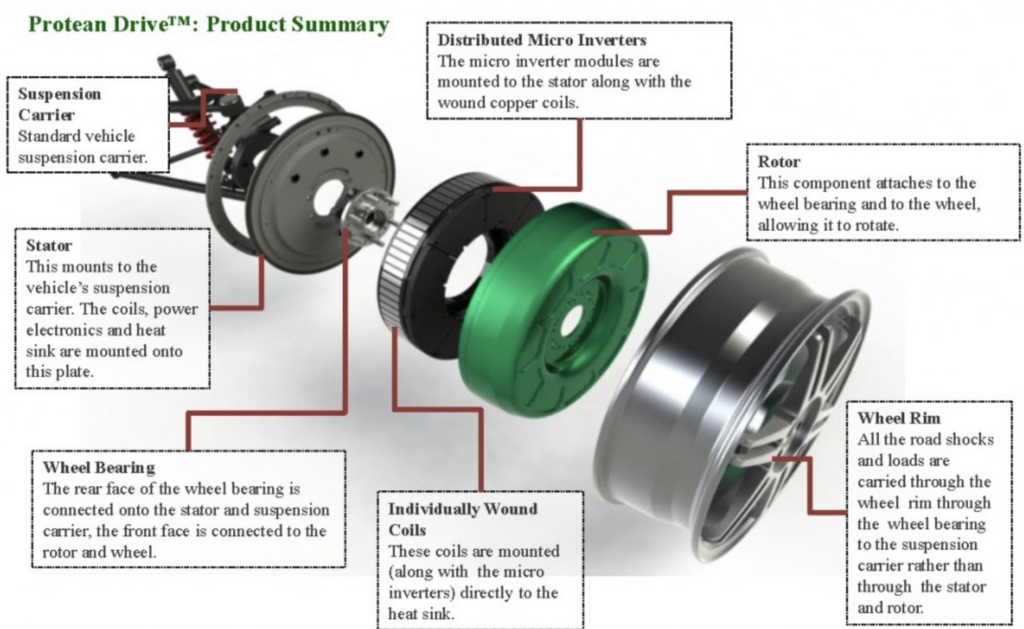Why In-Wheel Motors Could Define Future Car Designs
In-wheel motors were invented back in 1900 and allowed for complete freedom of design, over 100 years later and alongside the rise of EVs, car designers are giving in-wheel motors a second look.
This article is more than 2 years old
Back in 1900, two car moguls, Ludwig Lohner and Ferdinand Porsche designed an electric car (EV) with battery-powered motors attached to the base of its front wheels. There was quite a fuss over the idea of the in-wheel motors but later made no ground as the technology was taken over by a world fueled by gasoline-powered vehicles. Well over a century later the in-wheel motor design for electric vehicles is once again making its debut.
The news coming directly from CNN Business explains by packing everything into the base of the wheels there becomes no necessity for any other typical components like a drive shaft or a gearbox, which usually transfers the power from the motor to the motion of the wheels moving. By mounting the engine inside the rim of the electronic vehicle’s wheels, the power is delivered to exactly where it is needed most to drive. The in-wheel design also makes the electronic vehicle lighter and saves more energy with a reduction in travel distance.
The chief commercial officer of Slovenian company Elaphe Propulsion Technologies, Luka Ambrozic says, “In’wheel motors are a game changer,” Ambrrozic continues, “They offer the ultimate freedom of design giving vehicle manufacturers the opportunity to build better and smarter cars”.

Ambrozic tells CNN business the in-wheel engine design frees up space in the electronic vehicle and allows the manufacturer to design the car to be more aerodynamic. If the electronic vehicle is more aerodynamic it will require less power, which means a lighter electronic vehicle with even smaller batteries than ever before. Market and Markets, a research firm, says the demand for in-wheel motors for electronic vehicles is anticipated to grow with the increase in the volume of electronic vehicle sales, expected to reach more than 4 billion dollars by 2026.
Another company that develops solar electric vehicles, Aptera Motors has reached out to supply in-wheel motors for its three-wheeler design, although there is no set date for production at this point in time. Lordstown Motors is also using the in-wheel motors for its new line of Endurance electronic pickup trucks which hit factory floors in September. All of this is reflective of how versatile the in-wheel motor design really is. It can be used in both heavy-duty and lightweight electronic vehicles.
There are some industry experts who are not a fan of the in-wheel engine for electronic vehicles and think there will be limited uptake in the mainstream markets. A senior technology analyst who specializes in market research, especially for electronic vehicles notes that most large vehicles have based their design platform on having an onboard motor feature. Switching to in-wheel engines will require the entire electronic vehicle to be redesigned. Electronic car manufacturers would have to start all over from scratch to accommodate the in-wheel engine design.
Manufacturers are also worried about the suspension and durability of the In-wheel motors as they are far more exposed to the elements of nature. There are also concerns about the impacts and vibrations from the road. Adding in-wheel engines to electronic vehicles will make the wheels heavier and could potentially impact the comfort of the drive for all the passengers.



